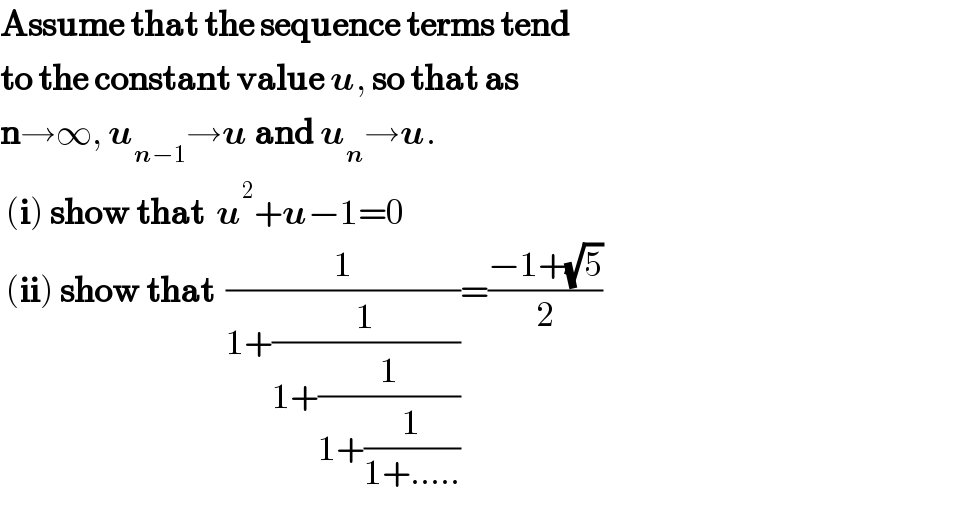
Question and Answers Forum
Question Number 175211 by MathsFan last updated on 23/Aug/22

Answered by Rasheed.Sindhi last updated on 23/Aug/22
![(ii) u=(1/(1+(1/(1+(1/(1+(1/(1+.....)))))))); u>0 u=(1/(1+u)) u^2 +u−1=0 u=((−1+(√(1−4(1)(−1))))/2)=((−1+(√5))/2) [((−1−(√5))/2)<0]](Q175212.png)
Commented by MathsFan last updated on 24/Aug/22

| ||
Question and Answers Forum | ||
Question Number 175211 by MathsFan last updated on 23/Aug/22 | ||
 | ||
Answered by Rasheed.Sindhi last updated on 23/Aug/22 | ||
![(ii) u=(1/(1+(1/(1+(1/(1+(1/(1+.....)))))))); u>0 u=(1/(1+u)) u^2 +u−1=0 u=((−1+(√(1−4(1)(−1))))/2)=((−1+(√5))/2) [((−1−(√5))/2)<0]](Q175212.png) | ||
| ||
Commented by MathsFan last updated on 24/Aug/22 | ||
 | ||